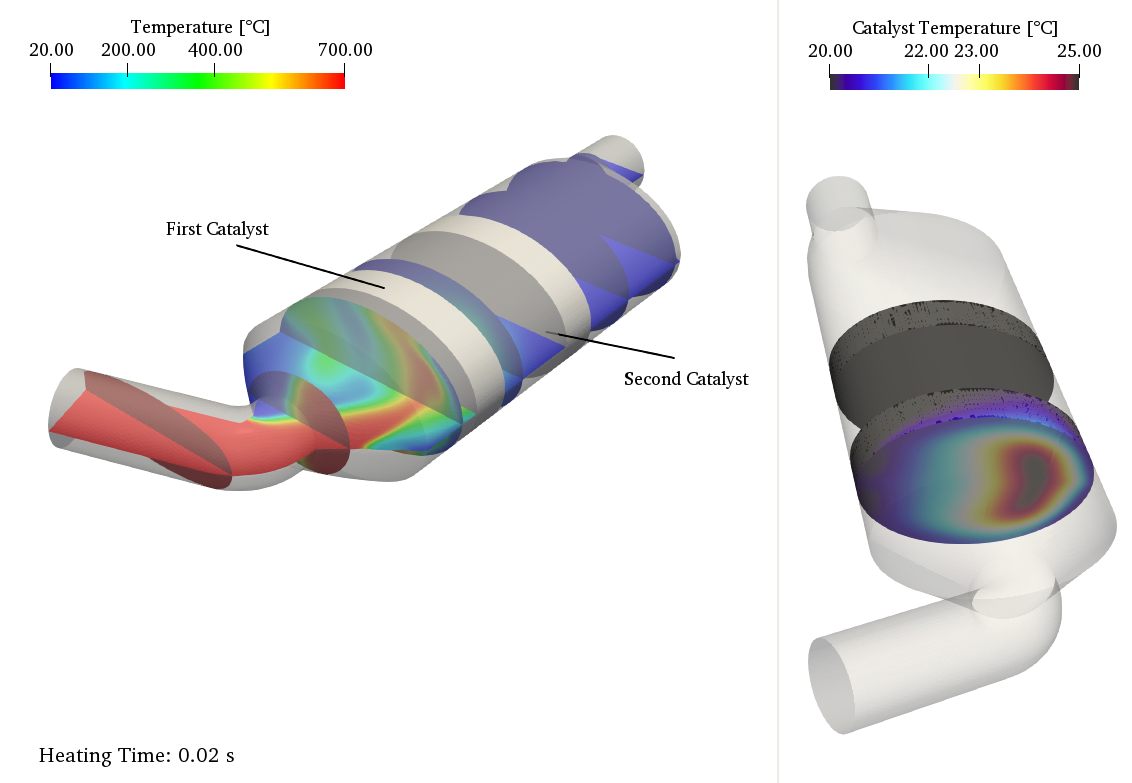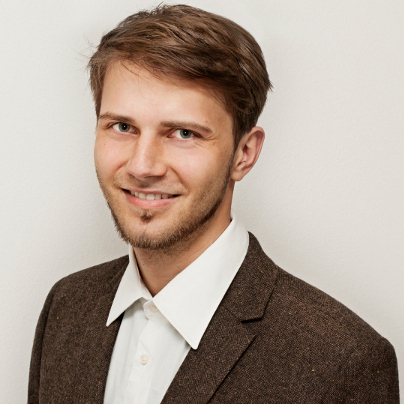Catalyst Heat-Up Simulation
chtMultiRegionFoam, heat-transfer coupling with inter-region source terms and porous media
In the automotive and power-plant construction sector, catalyst systems are used to clean the exhaust gas from the engine. Commonly, the selective catalytic reduction (SCR) system is used to reduce the NOx emissions. For such purpose, the SCR catalyst substrate has to have a defined minimum temperature before the DeNOx reactant is injected (around 280 °C). The following tutorial gives details about the coupling of the fluid and solid region with an energy transfer between these regions.
Energy transfer can be modeled using three different models
The training case shows the coupling of the solid and fluid regions (regarding energy transfer) using the constant heat transfer model. However, OpenFOAM® also allows one to use two other models which might be more accurate. The constant heat transfer model still requires two input parameter such as the total heat-transfer area and the heat-transfer coefficient (HTC). Other models can calculate the HTC based on a Nusselt correlation, which is not investigated here but mentioned.
As the catalyst substrate allows the fluid to go only in one direction while forcing a pressure drop, the Darcy-Forchheimer equation is used to model the porous zone of the two catalysts. The model parameters used here are just arbitrary to demonstrate the usage and set-up of such a coupling problem.



Published under the GNU General Public License 3
Over the last ten years, Tobias tried to publish a wide range of different materials related to OpenFOAM® and CFD. You know it much better than he does if the content is worth to be supported. If you want to thank Tobias for the work he did, feel free to tell the community your opinion about the work Tobias Holzmann is doing or you can email your thoughts directly to »
Support the work of Tobias Holzmann
The available OpenFOAM® training cases are tested and built for different OpenFOAM® versions (not distributions) on a Linux machine. During the tests, only the OpenFOAM Foundation version of OpenFOAM® was used. Furthermore, the following software packages are required for most of the training cases: Salome®, ParaView®, and for optimization tasks, one also needs the open-source software DAKOTA®. The OpenFOAM® cases might work with the ESI version of OpenFOAM® but it is not supported. For the OpenFOAM® extend project, the training cases will probably not work as the code diverged too much. Additionally, there is no support for Windows-based and MAC-based OpenFOAM® versions.
This offering is not approved or endorsed by OpenCFD Limited, producer and distributor of the OpenFOAM software via www.openfoam.com, and owner of the OPENFOAM® and OpenCFD® trade marks
Share the work on Your social network
Tobias would be grateful if you share his work on your social network in order to keep the OpenFOAM® community up to date. Furthermore, sharing the work will avoid that people investigate into topics, that are already prepared for your study such as the examples provided by Tobias Holzmann.


